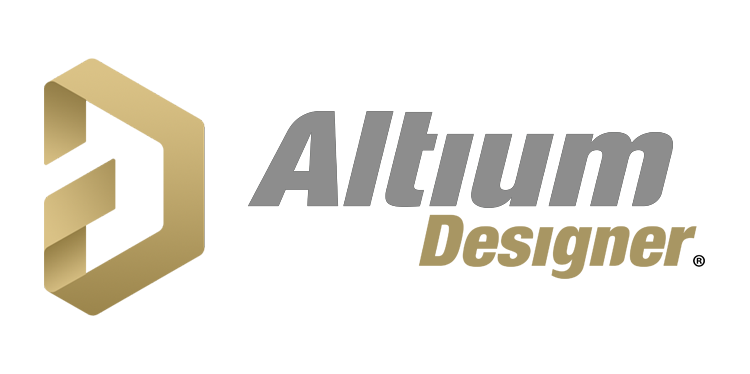Altium Designer Cheat Sheet
A cheat sheet for Altium Designer written for the course ENEL602 but can be used for general reference.
Hotkeys
| Legend: Essential 🟥 | Nice-to-know 🟨 |
| Hotkey | Description | Window | Importance |
|---|---|---|---|
[shift] + (left click drag) | Copy and move selected components | 🟥 | |
[ctrl] + (right click drag) | Move components with breaking connections | 🟥 | |
[g] | Toggle grid size | Both | 🟥 |
[spacebar] | Rotate object | Both | 🟥 |
[o] | Options sub-menu | 🟥 | |
[Tab] | Edit objects properties while placing | Both | 🟥 |
[ctrl] + [w] | Place wire | Both | 🟥 |
[s] | Select menu | 🟨 | |
[x] | Flip object on x-axis | 🟨 | |
[y] | Flip object on y-axis | 🟨 | |
[z], [a] | Zoom to fit all on screen | 🟨 | |
[shift] + [s] | Single layer to multi-layer | PCB | 🟨 |
[shift] + [c] | Reset selection | 🟨 |
Project Workflow
Part 1: Schematic
- Open Altium.
- Create new project, schematic and PCB file.
- Save these files under the same directory, give the directory a unique name e.g. Power supply (This will be the only thing to identify the project).
- Rename files:
<first-name>_<last-name>_<student-id>_<lab-number>Labs: Monday, Lab1; Tuesday, Lab2; Wednesday, Lab3 - press
[o], [t]and update document parameters.Revision,DrawnBy - Fill in the Title block in the bottom right.
DocumentName,SheetNumber,SheetTotal,Revision,DrawnBy - Go through an place all of the components out, the trick here is that if there is more than one of the same component then right click the component in the menu and click
place <component>, then edit its parameters to the correct values and the name. If done correctly, components will be named in a sequential manner. - Look at your bill of materials (BOM), ensure that it matches the given projects BOM exactly (it is generated from the same preview).
- Group and space out components.
- Make connections and make the document neat as you go, using
[ctrl]+(left click drag)where needed to it look tidy. - Create nets and use
[shift]+(left click drag)to quickly copy and place (for a line above the net: e\x\a\m\p\l\e). - Verify document!
[d], [u](Design → Update PCB document → validate). - Double-check everything, mainly labels and values.
- Add rules to the schematic
Common mistakes:
- Overlapping wires (look for junctions)
- Open circuits
- Unnamed or incorrectly named components or nets
- Incorrect pins connected
Part 2: PCB
- Set the origin in the bottom LHS of the board.
Edit→Origin→Setor hotkeys[e],[o],[s] - Define the PCB shape.
- Click the
Mechanical 1layer. - Using the line or rectangle tool, copy the given dimensions. You can right-click the shape and then click
propertiesto change the dimensions of the shape. - To cut this shape out, select your shape and click:
Design→Board shape→Define board shape from selected objectsor the shortcut is[d],[s],[d]
- Click the
- Define the keep-out layer: Select the previous shape and copy, click a reference point on the shape then click
Edit→Paste Special→Paste - Change the label size according to the project. (usually 40mil Text Height and 8mil Stroke Height)
- right click label
- click
Find similar objects… - Change text
widthandheightto besame
Installing Altium at Home
- Download Altium Designer here https://www.altium.com/products/downloads
- Register here for a license https://www.altium.com/education/student-licenses
The rest is self explanatory, just open Altium, login and enter your license. You will also need to install the AUT Altium libraries to be able to do work at home, see below.
Installing Component Libraries
- Download the libraries AltiumLibraries and save it in a good place. from the AUT computers:
K:\WELLESLEY COPY\DESIGN & CREATIVE TECHNOLOGIES\School of Engineering\Electrical & Electronic Engineering\Resources\AltiumLibraries - From the components window click the top RHS hamburger menu (If you can’t see this click
Panels→Componentsin the bottom RHS corner). - Click
File-based library preferences… - Click on the
Installedtab, thenInstall... - Navigate to the file you downloaded and select all of the files and click
open. - Then just close and you’re done!
Common issue: Searching Components
To see extra filtering, you must ensure you’ve done these two things:
- Made the components window wide enough.
- clicked the top LHS bulleted hamburger menu in the components window.
This post is licensed under CC BY 4.0 by the author.
